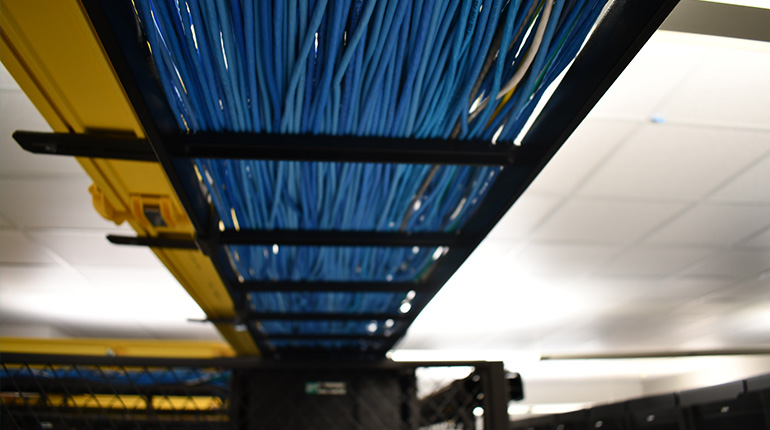To keep pace with the rapid technological advancements, you must have a reliable and efficient network performance. Therefore, it is crucial to understand how certain configurations can impact your network infrastructure. We will now delve into the key networking practice called BGP multihoming and thoroughly explore its effects on efficiency and performance.
What is BGP Multihoming?
In the world of networking, Border Gateway Protocol (BGP) is a key protocol used for exchanging routing information between different networks. BGP Multihoming is a technique used to connect an enterprise network to multiple Internet Service Providers (ISPs) to ensure redundancy and reliability. This provides some advantages, including better performance and increased network efficiency. However, the technique has disadvantages that can negatively impact network performance. In this blog post, we will discuss the impact of BGP multihoming on your network infrastructure efficiency and performance.
The Impact of Multihoming on Network Infrastructure
Here are the ways BGP multihoming affects your network infrastructure efficiency and performance:
1. Enhances Network Performance
Network performance is of the utmost importance for ensuring smooth and efficient data transfer. One key solution that emerged for optimizing network performance is multihoming. Multihoming is a technique that allows a network to connect to more than one internet service provider (ISP) simultaneously, enhancing reliability and improving availability. By providing multiple paths for data to flow, multihoming can reduce latency and packet loss plus prevent data bottlenecks. Also, it allows for efficient load balancing and better use of available bandwidth. With multihoming, organizations can ensure their network infrastructure is robust, reliable, and responsive, thereby delivering a seamless digital experience to their customers.
2. Maximize Efficiency
By leveraging multiple active connections, the provider can maximize efficiency and minimize downtime. How can the provider make the most of this strategy? One way is to use a network management tool that allows them to balance the traffic across all available connections evenly. Another approach is to leverage intelligent routing techniques that automatically redirect traffic based on network availability and performance. Additionally, the provider can prioritize critical applications and services to ensure organizations always receive the necessary bandwidth and resources. In the meantime, the provider can implement failover mechanisms to lessen the disruption in case of network failure. Overall, multihoming offers plenty of benefits and can help make the most of network connections cost-effectively and efficiently.
3. Load Balancing
Network load balancing is a key factor when it comes to boosting network infrastructure efficiency and performance. By using multiple active connections, the provider can balance the organization’s traffic across all available paths dynamically. This can result in improved reliability and better use of bandwidth. Multihoming techniques help ensure every connection remains active while providing an effective way to maximize resource use. With careful implementation, organizations can use multihoming to improve their network performance and lessen disruptions in an increasingly connected world.
4. Security and Reliability
Multihoming has a significant impact on security and reliability. By relying on multiple networks, businesses and individuals may expose themselves to a more significant number of security threats and network disruptions. To reduce these risks, the provider can implement robust security protocols and maintain a deep understanding of network architecture and infrastructure. The success of multihoming depends on a comprehensive strategy that prioritizes security and reliability.
Some Disadvantages of BGP Multihoming
Despite the numerous advantages of BGP multihoming, there are a few drawbacks to consider.
1. Increased Costs
BGP multihoming can result in increased costs, as it requires additional hardware and software, plus ongoing maintenance and support for the provider.
2. Potential for Routing Issues
BGP multihoming can lead to routing issues. For example, asymmetric routing, where packets take different paths through the network, can result in network congestion and packet loss. This issue can be difficult to diagnose and resolve, leading to network downtime.
3. Increased Complexity
Multihoming can add complexity to the network, as it requires careful administration and ongoing maintenance for the provider. This calls for a deep understanding of network architecture, protocols, and routing policies to ensure networks get the proper management and configuration.
What Should You Consider When Using a Multihomed Network Solution?
When it comes to using a multihomed network solution, there are a few key considerations to keep in mind.
1. Diversity of Connections
The more ISPs and networks you connect to, the more paths data can travel. This helps to improve reliability and availability while minimizing disruption.
2. Intelligent Routing
Leveraging an intelligent routing protocol can help balance traffic across all available connections automatically, ensuring data moves along the most efficient path.
3. Flexible Failover
In the event of a network failure, it is important for the provider to have flexible failover mechanisms in place that allow them to quickly reroute traffic and restore service.
4. Security Considerations
By connecting multiple networks, organizations may inadvertently expose themselves to a greater number of security threats. Therefore, it is important for the provider to implement robust protocols and maintain an understanding of the organization’s network architecture and infrastructure.
The Bottom Line
BGP multihoming is a powerful tool that can increase network reliability, performance, and efficiency. However, it requires careful planning and setup to ensure the organization realizes its benefits without introducing additional complexity or costs. By understanding the advantages and disadvantages of BGP multihoming, businesses can make informed decisions about its use in their network infrastructure. If you’re looking for a reliable and secure multihomed network solution, contact us today. We can provide you with an in-depth analysis of your current infrastructure and customized solutions to meet your specific needs.

